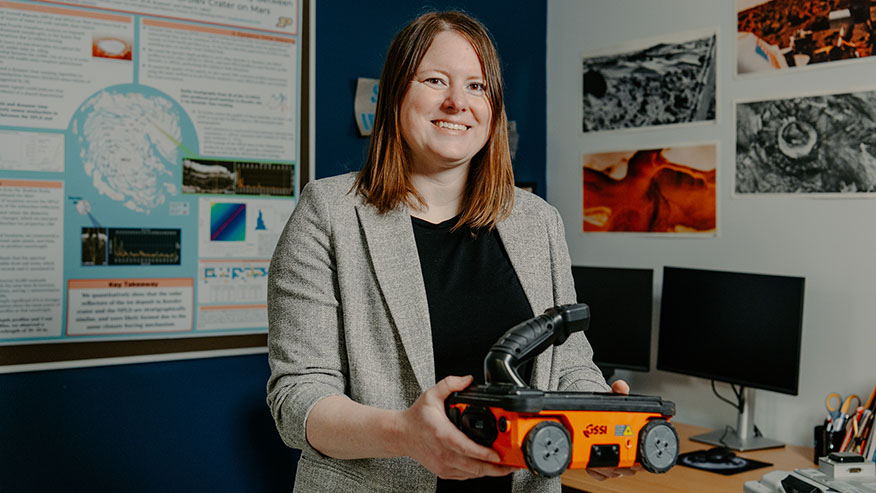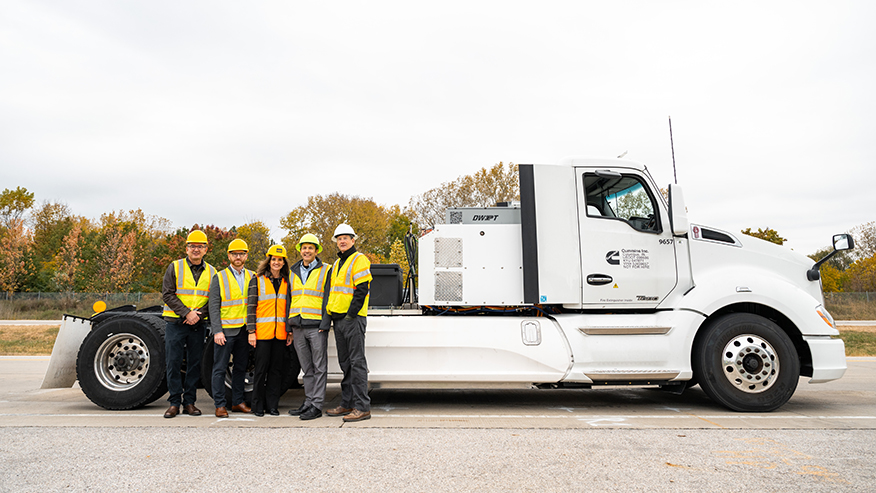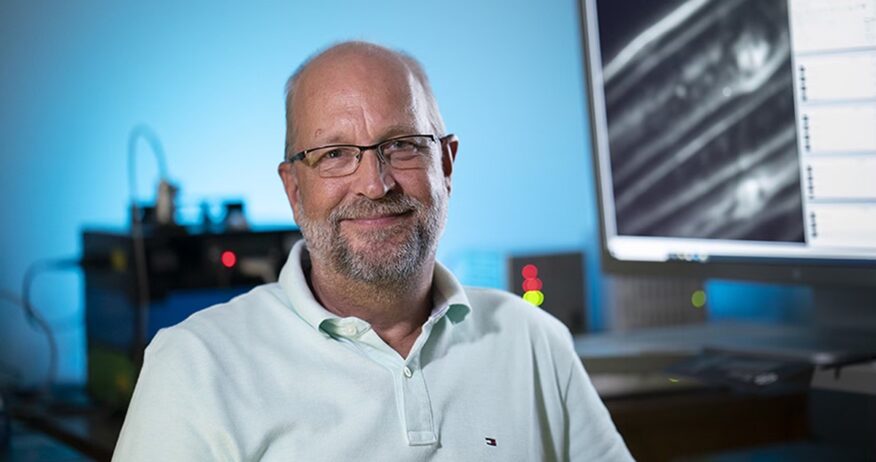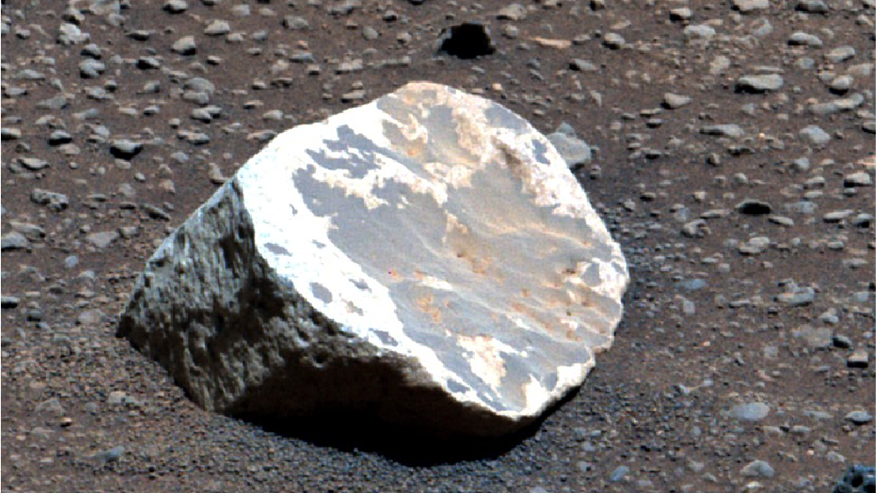From lab to lunar and beyond: Check out some of the innovative space research from Purdue University

Ali Bramson is focused on locating subsurface ice deposits on Mars and the moon for climate research and as a resource for future habitats. (Purdue University photo/Kelsey Lefever)
FROM LAB TO LUNAR AND BEYOND
Space scientists are the boots on the ground of extraterrestrial exploration, and Purdue’s researchers rank among the most elite.
This collection of impactful news from Purdue University’s space research labs represents the wonder of outer space’s limitless potential.
RESEARCH BESTS
Finding subsurface ice on Mars and the moon could enable habitats, travel and further science
Ali Bramson is accelerating new methods for finding subsurface ice pockets on the moon and Mars using orbital scans and, more recently, a fleet of ground-based radars.
Being able to reliably locate ice pockets would benefit research into potential space habitats, relieve payloads from having to carry water, and provide a valuable element of rocket fuel for return trips of further space exploration. Beyond travel and habitation, subsurface ice also is a compelling target for astrobiology, climatology and geology research.
Bramson’s research is funded through NASA’s Mars Data Analysis, Lunar Data Analysis and Solar System Workings programs.
Ali Bramson | Bramson Research Group
Cloudy skies = clear science: Atmospheric scientist studies clouds’ causes and effects

Alexandria Johnson’s expertise in cloud physics provides vital information to many fields, from the way microplastics are affecting weather patterns to the study of faraway exoplanets.
After the most powerful telescopes have reached across the universe, sometimes Johnson’s ability to parse an exoplanet’s own densely clouded sky is the best way to see what’s happening on the farthest of these celestial bodies.
“If we want to understand these enshrouded exoplanets, we need to understand the clouds. That understanding gives us insights into the atmospheric chemistry at work, atmospheric circulations and the climate of these exoplanets,” Johnson says.
Alexandria Johnson | Johnson Cloud Lab
LEADING RESEARCH UNIVERSITY SPOTLIGHT
Gauging thickness of ice on Europa brings science closer to finding possibility of life
Europa, one of Jupiter’s rocky moons, is home to huge saltwater oceans and thought to be a potential home to nonterrestrial life — but this search for life is dependent on scientists knowing the depth of the icy shell encasing Europa’s entire surface.
Brandon Johnson’s research group has been able to determine the depth of that shell using his expertise in crater modeling.
- IN THE NEWS: The thick ice of Europa: a barrier or a gateway to alien life? (SciTechDaily)
FROM MARS: PERSEVERANCE UPDATE
The Perseverance rover continues its work on Mars, using a range of tools to investigate the planet’s surface before preparing to send Martian samples back to Earth for further research. Briony Horgan, co-investigator and long-term planner on NASA’s Perseverance rover mission and professor of planetary science, keeps us up to date on the rover’s latest findings.
- CNN: NASA’s Perseverance rover may have just found what it was looking for on Mars
- CNN: Accidentally exposed yellowish-green crystals reveal ‘mind-blowing’ finding on Mars
Briony Horgan | Horgan Research Group | Purdue’s Missions to Mars
RELATED: ‘Boilers to Mars’
Watch the trailer for “Boiler to Mars,” a short feature film that captures the collision of passionate persistence and relentless inquiry for which Boilermakers are known and which fosters the innovative research featured here.
BONUS STORY
ZME Science: NASA’s LEAF project will grow plants on the moon by 2026
When the Artemis spacecraft carries humans back to the moon for the first time in 50 years, it will also be carrying a greenhouse: NASA’s Lunar Effects on Agricultural Flora (LEAF) project. The LEAF project will study the feasibility of growing plants in harsh lunar conditions, to advance space farming for deep space human habitats.
Representing Purdue on the project is D. Marshall Porterfield, professor of biological engineering and space biophysics.
Purdue is working with a number of partners on this project, including NASA, the U.S. Department of Agriculture, several research universities and Space Lab Technologies.
About Purdue University
Purdue University is a public research institution demonstrating excellence at scale. Ranked among top 10 public universities and with two colleges in the top four in the United States, Purdue discovers and disseminates knowledge with a quality and at a scale second to none. More than 105,000 students study at Purdue across modalities and locations, including nearly 50,000 in person on the West Lafayette campus. Committed to affordability and accessibility, Purdue’s main campus has frozen tuition 13 years in a row. See how Purdue never stops in the persistent pursuit of the next giant leap — including its first comprehensive urban campus in Indianapolis, the Mitch Daniels School of Business, Purdue Computes and the One Health initiative — at https://www.purdue.edu/president/strategic-initiatives.
Media contact: Christy McCarter, mccarter@purdue.edu



